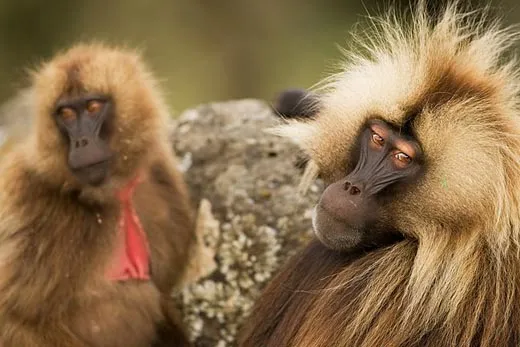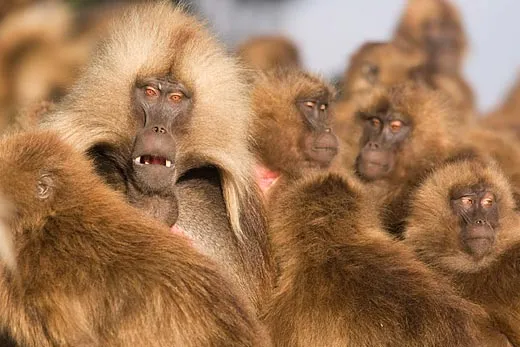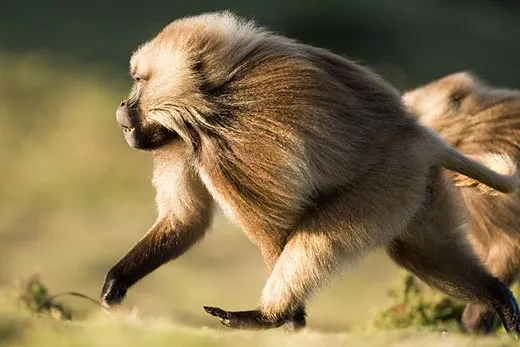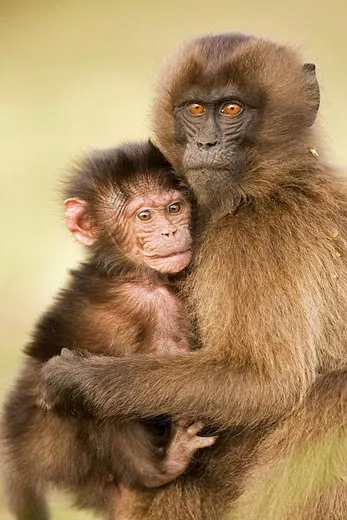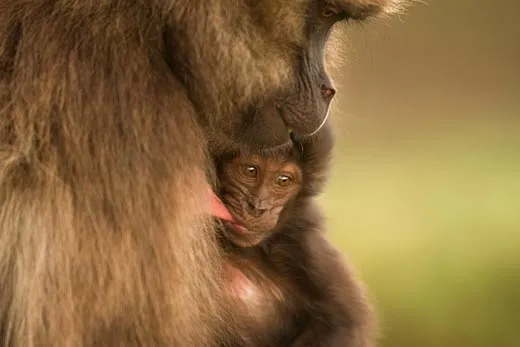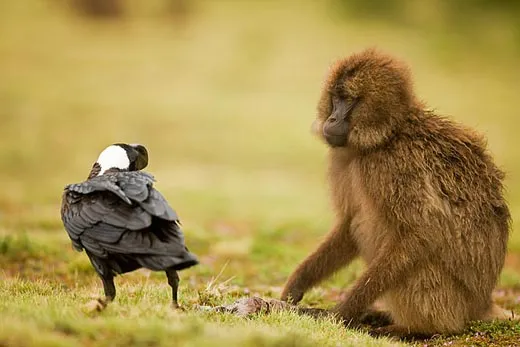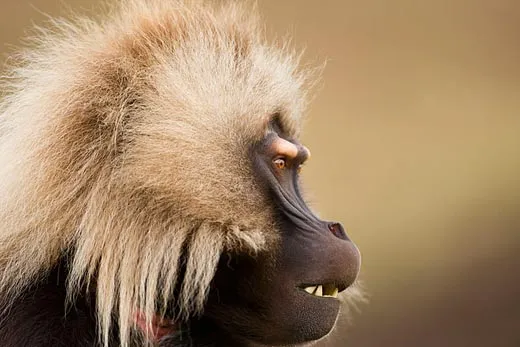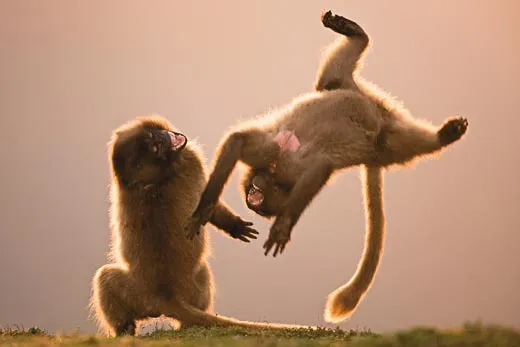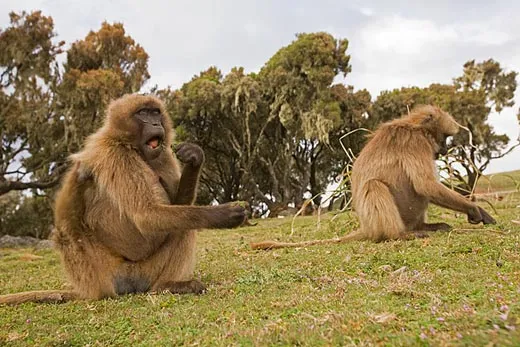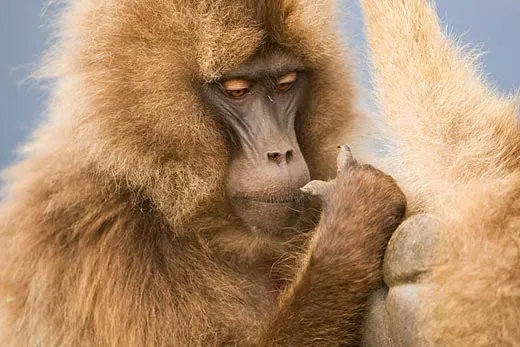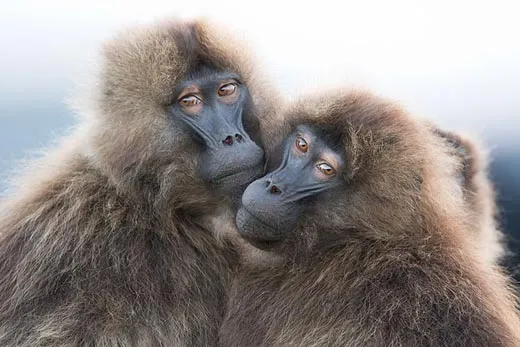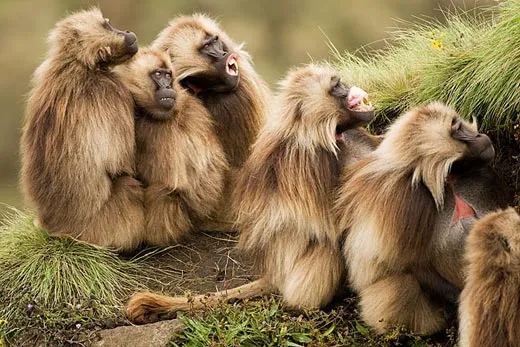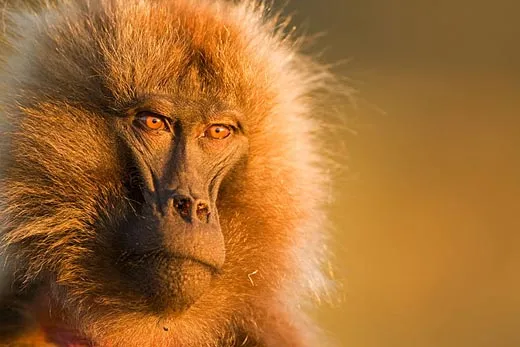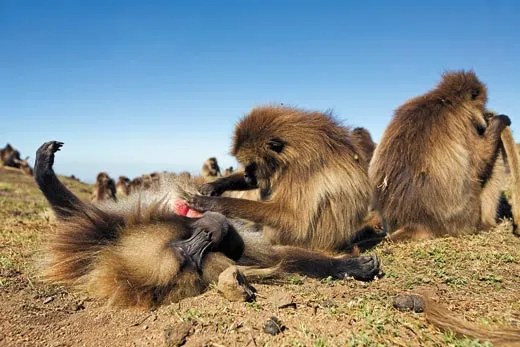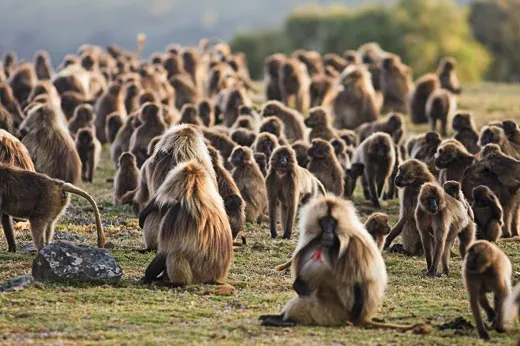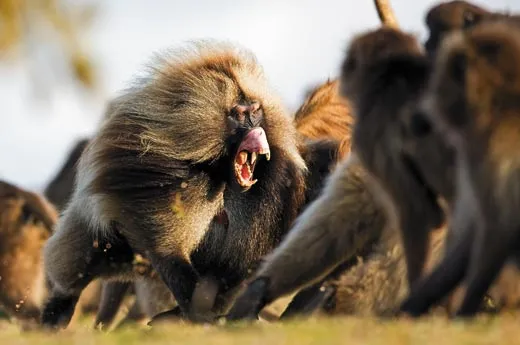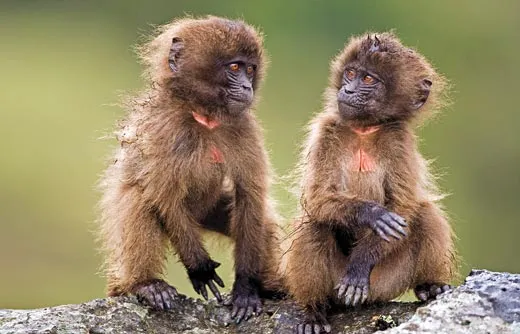Ethiopia’s Exotic Monkeys
High in the Simien Mountains, researchers are getting a close-up look at the exotic, socially adventuresome primates known as geladas
/https://tf-cmsv2-smithsonianmag-media.s3.amazonaws.com/filer/Ethiopia-Monkey-Geladas-631.jpg)
Geladas are isolated, oddball monkeys that science has largely overlooked. They live in large herds in the towering Simien Mountains of northern Ethiopia. A few researchers studied the primates in the 1970s, but famine and political turmoil in the region made further investigations impossible. "Almost no one's heard of geladas," says Jacinta Beehner, a University of Michigan biological anthropologist in the midst of a ten-year gelada study, the most extensive ever conducted. "They kind of got lost in the shuffle."
Yet—if you don't mind heights—geladas (Theropithecus gelada) make intriguing research subjects. With their falsetto cries, explosive barks and soft grunts, geladas have one of the most varied vocal repertoires of all the primates. The noisy herds are relatively easy to follow. Unlike most monkeys, geladas graze primarily on grass. They are usually observable—except at night, when they disappear over the edges of cliffs to sleep on tiny ledges, safe from leopards and hyenas.
Geladas are visually striking, with burning eyes and leathery complexions. Males have vampiric canines, which they frequently bare at each other, and their golden manes are the stuff of shampoo commercials. "They cry out to be photographed," says Fiona Rogers. She and her partner, Anup Shah, visited Beehner's camp in Simien Mountain National Park for a month to photograph the animals.
Male geladas are the size of large dogs, weighing 50 to 60 pounds. Females are about half as big. Both sexes have a bald, hourglass-shaped patch of skin on their chests that telegraphs a male's social status and a female's reproductive stage. Depending on hormone levels, the color ranges from meek eraser pink to fiery red. Males' patches are brightest during their sexual prime, Beehner and her husband, University of Michigan biologist Thore Bergman, have found, and females' chest patches blister when they are in estrus. (They are also called "bleeding-heart baboons," though they are actually monkeys.)
Geladas favor soft, protein-rich fescue grasses, shoveling away with both hands for hours each day. Their fiber-heavy food generates plentiful stool samples, another reason Beehner loves working with them; analysis of their feces can reveal hormone levels. But their eating habits don't doom them to dull lives. "A lot of people talk about vegetarian primates as being boring, because they just sit around and digest all day," Beehner says. Not geladas. They are always signaling and communicating with each other. "It really is one big soap opera," she says.
Beehner's focus is the evolution of social behavior, and geladas are very social. Herds can be enormous—up to 1,200 individuals. But most interactions occur within a harem, composed of a leader male, two to a dozen females and their young. The females are related to each other, and they sometimes turn on the leader if he is grooming them insufficiently, not protecting them or otherwise shirking his duties.
Groups of sullen-looking bachelor monkeys lurk outside the herds. These juveniles are similar to adolescent street gangs, and Chadden Hunter, an Australian researcher who began studying geladas in the late 1990s, dubbed two such groups the "Sharks" and the "Jets," à la West Side Story. Fiona Rogers took such a liking to the bachelors' hangdog looks that her partner says he felt a stab of jealousy. "I was a little worried," Shah says.
Every so often, a leader male, herding his harem and emitting high squeals, challenges a bachelor, which responds with a "roar bark." According to protocol, the leader tears around, raising a miniature dust storm, with the bachelor in pursuit. The ritual concludes when the leader leaps into a tree, rattles the branches and shrieks "Yeow-Yeow-Yeow!" The bachelor skulks away. "They are showing how strong and fit they are," Beehner says. "It's all about showmanship."
But woe to the leader whose posturing is not persuasive. Eventually a bachelor gang targets a harem to take over, and then, Beehner says, the fighting turns ugly. Young gangsters take turns chasing and tiring out the leader until a bachelor contender steps forward. A gladiatorial battle ensues—with hair pulling, scratching and biting—sometimes leaving one animal mortally wounded.
Beehner remembers one fight that lasted three days. (The leader male prudently took breaks to pay court to his females.) It appeared to be a stalemate until a treacherous female edged away from the harem. As her champion looked on, she sidled up to the bachelor. The leader male "didn't even try to prevent it," Beehner recalls. "He just quit."
Bergman, an expert in primate vocalization and cognition, has been recording the leader males' triumphant triple "Yeow" to see how the yell degrades over time, signaling weakness to bachelors.
A deposed leader may be allowed to stay with a harem, where he cares for the young but loses mating rights, taking on a sort of avuncular role. Within a few months of being dethroned, the flaming redness of his chest patch subsides to an anemic pink.
The gelada is the only species remaining from a lineage of grazing primates once more common than baboons, says Robin Dunbar, who studied geladas in the 1970s. Its predecessors began disappearing a million years ago when the climate warmed. Palatable grasses began growing only at much higher altitudes, the monkeys shifted their range or starved, and now, Dunbar says, "we have only this one species on the tops of the mountains."
Today, with Ethiopia's 1974 to 1991 civil war concluded and the government stabilized, the northern mountains are accessible to researchers once again. And the local economy is picking up. Goats, cows and sheep compete with the monkeys for grass in alpine pastures, and farmers sometimes kill geladas that plunder barley crops. It's not clear how many geladas there are. Dunbar's estimates from the 1970s put the population at 100,000 to 200,000, but much land has been converted to farms since then. Roaming herds and rugged terrain make counting difficult, but Beehner, who has done surveys of her own, worries that the current figure is much lower—perhaps as few as 20,000.
Beehner and Bergman are also studying herd structure. Although the monkeys spend hours socializing within their harems—especially while sunbathing in the morning—they tend not to know their neighbors in the herd. The bachelor gangs notwithstanding, Beehner says, "it's a little like humans in the suburbs."
Abigail Tucker is a staff writer for Smithsonian.
Anup Shah and Fiona Rogers live in Kenya and London; Shah's photographs appeared in a 2006 Smithsonian story about wildebeests in the Serengeti.
